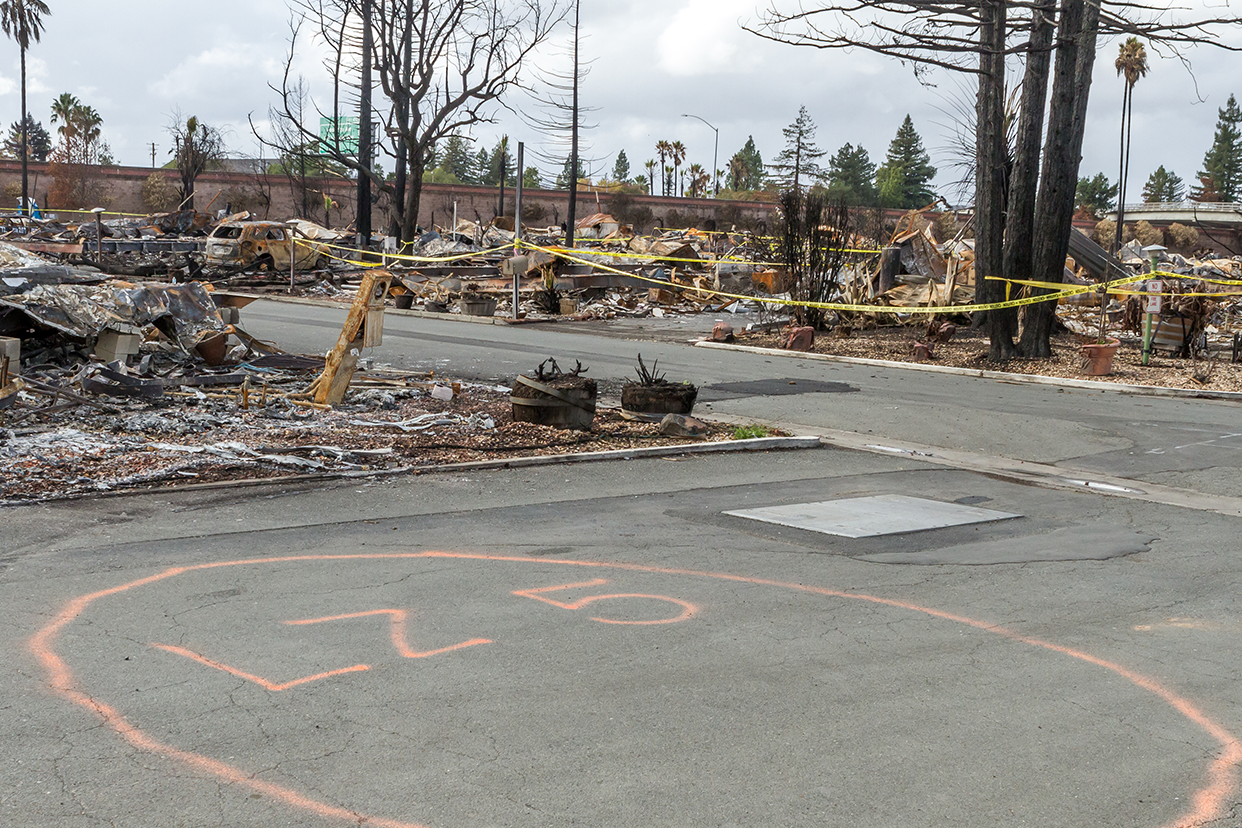California’s housing crisis remains a pressing issue. Gavin Newsom initially set a goal to build 3.5 million housing units by 2025, but with California averaging only 110,000 permits annually since 2019—well below the 500,000 needed—he revised the target in 2022. The new benchmark requires cities to plan for 2.5 million homes by 2030, but so far, only 1.1 million have been planned. The lack of housing has fueled rising rents and home prices, priced many families out of homeownership, and driven residents to leave the state. Research suggests that restrictive land-use regulations have been a major obstacle to new development, further exacerbating the crisis.
The recent wildfires in Los Angeles have exacerbated this crisis. In January 2025, the Palisades and Eaton fires destroyed or damaged approximately 18,295 homes, with single-family residences accounting for the vast majority of the affected structures. This destruction has placed additional strain on an already limited housing supply.
In addition to reducing available housing stock, the wildfires have also introduced new challenges that complicate recovery efforts. LightBox recently released a groundbreaking study that revealed widespread environmental hazards in areas affected by the recent Los Angeles wildfires, identifying more than 1,300 properties in the affected region likely to present environmental risk. The report highlighted potential hazards related to the presence of petroleum, solvents, asbestos, and lead—all of which are associated with human health risks and whose presence could complicate the urgent cleanup and rebuilding efforts.
These compounded challenges have spurred legislative efforts aimed at addressing both the housing shortage and the risks posed by extreme weather events. California’s housing crisis and wildfire recovery challenges intersect in two key legislative efforts—Senate Bill 9 (SB 9) and Senate Bill 140 (SB 140).
Senate Bill 140 (SB 140), which took effect on January 1, 2025, directly addresses disaster recovery by streamlining permitting processes for rebuilding in wildfire-affected communities. SB 140 allows local governments to expedite approvals for rebuilding projects, encouraging the use of fire-resistant materials and construction techniques. The goal is to accelerate recovery while ensuring that new developments enhance resilience against future wildfires.
The bill also streamlines permitting processes for rebuilding and provides flexibility for zoning regulations, enabling faster approvals for rebuilding efforts that adhere to modern safety standards. By reducing bureaucratic delays, SB 140 aims to ensure communities can recover more efficiently while implementing fire-resilient building practices.
Senate Bill 9 (SB 9), introduced in November 2021, was designed to increase housing supply by allowing lot subdivisions and duplex construction in areas previously zoned for single-family housing. While the bill aimed to accelerate development, especially in high-demand areas, its impact has been limited by legal, economic, and logistical barriers, with only 5.5% of single-family properties eligible under its provisions. Further complicating its effectiveness, local governments have actively resisted implementation, using lawsuits, zoning loopholes, and restrictive design standards to severely curtail new development, preventing SB 9 from making a meaningful dent in California’s housing crisis.
Rebuilding Efforts and Zoning Implications
The integration of SB 9 and SB 140 presents an opportunity for local governments to rethink zoning regulations in the context of rebuilding efforts. SB 9 encourages the construction of additional housing units, which could help meet the demand for affordable housing in areas that have seen a population influx following wildfire evacuations. However, local jurisdictions must balance this increased density with considerations for fire safety, infrastructure, and environmental sustainability. More dwellings in wildfire-risk zones could heighten exposure to fire hazards, creating new challenges for emergency response and evacuation planning.
Local governments may also use the flexibility afforded by SB 140 to implement new zoning laws that prioritize fire resilience in the design of rebuilt homes. For instance, jurisdictions could incentivize or mandate the use of fire-resistant materials, defensible space practices, and landscaping techniques that minimize fire risk. This shift towards fire-resilient building practices is crucial, given the increasing frequency and intensity of wildfires in California.
“While these laws provide a framework for addressing housing shortages and rebuilding in wildfire-affected areas,” said Alan Hall, zoning expert and senior account executive at LightBox, “it is important to note that the successful implementation of these laws will require active community engagement to ensure that the needs and preferences of residents are taken into account.”
Moreover, Hall noted that local municipalities must navigate the complexities of integrating new housing development with fire safety regulations, community character, and environmental concerns.
California’s SB 9 and SB 140 represent a dual approach to addressing the housing crisis while facilitating recovery from wildfires. They create pathways for increased housing density and streamlined rebuilding efforts but must be implemented with a keen eye towards fire safety and community resilience. As the state grapples with the realities of extreme climate events and urban development, these laws could play a crucial role in shaping the future of California’s vulnerable fire-prone communities.
For more insights on zoning assessment news and trends, subscribe to Insights.
LightBox PZR is accepted by every major lender and title company in the U.S. including Fannie Mae and Freddie Mac. PZR is the nation’s most trusted zoning due diligence solution delivering unmatched speed, accuracy, and efficiency, since 1993.

